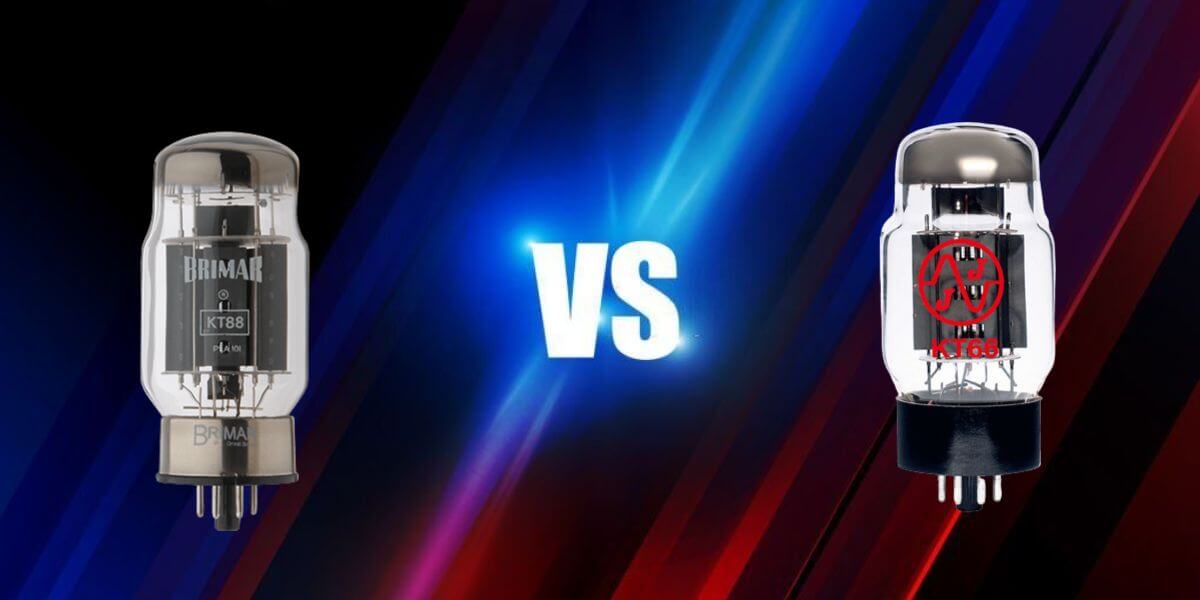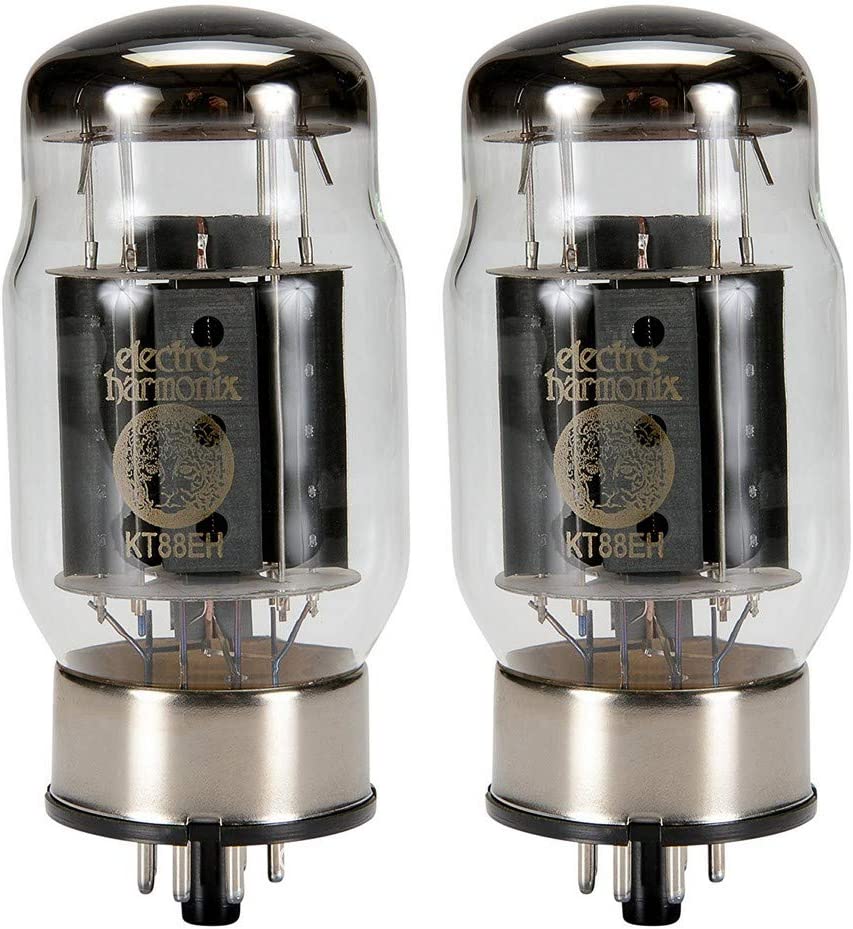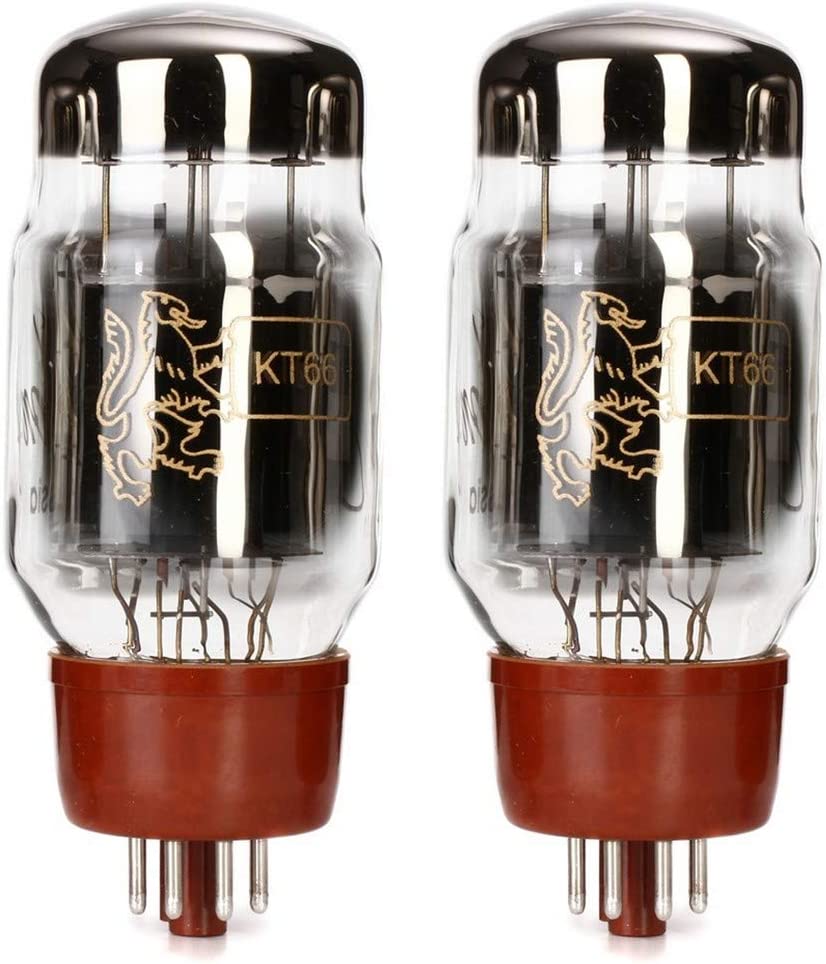Having been in the market for several decades, the KT88 and the KT66 amp tubes are now two of the best-known options on the market. They’re designed specifically for amplifying audio, especially in electric guitars.
If you’re into playing R&B, classic rock, jazz, funk, or blues, you’ll definitely be needing one of these beam tetrodes. To learn more about the highs and lows of these tube amps, scroll down.
We rounded up everything you’ll need, starting from when they were first made all the way down to who manufactures them today. You’ll also find a section on which tube works best with which genres. After all, we wouldn’t want you to sound anything less than your absolute best!
Now, let’s get to it!
KT88 vs. KT66: Overview
Whether it’s on a radio amplifier or one made specifically for musical instruments, the KT88 tube amp is the go-to option. It’s a reliable tube that offers sonic sounds with excellent dynamic detail across a broad audio spectrum.
On the other hand, KT66 tubes have a higher overload tolerance, which is why they’re often found in jazz guitar amps. These tubes are best known for their mid-range sound frequencies and rich, smooth audio output.
All About the KT88
Pros
- Capable of delivering clean, tight, and dynamic sound with a lot of punch
- Leans more towards the deep low end of the audio spectrum
- Features a wide glass octal with less of a mid-peak for producing loud, booming sounds
- Produces low levels of sound distortion
Cons
- Can sound slightly squeaky or brittle on high-end ranges
The KT88 audio output valve was first designed by a British manufacturer of thermionic valves, and a subsidiary of the General Electric Company called Marconi-Osram Valve (MOV) in the second half of the 1950s. This vacuum tube is an eight-pin octal beam tetrode designed to act as an upgrade to the KT66.
The KT88 shares many characteristics with its US counterpart, the 6550, in terms of design and usability. Yet, the KT88s have a higher voltage rating, as well as a more increased plate power.
One of the best things about the KT88s is their maximum power output and strong, aggressive sounds.
These audio amplifiers have one of the best-sounding tubes of almost all the high-fidelity audio amplifiers on the market. They bring a sweet-sounding mid-range, but with such low and high sound extremes, making it easier for them to reach much further without distortion.
Nowadays, many high-end audio tube amp manufacturers still depend on the KT88 or one of its variants with a similar design, such as the KT90 or the KT120.
Many jazz guitar players use the KT88s in their tube amp to get a strong, deep bass as they’re playing. This tube is also known for its solid highs and adequate mid-ranges.
In addition, because of their unique characteristics and availability, KT88s are becoming more and more popular in the production of high fidelity audio amplifiers.
The one downside that has made guitarists put off buying used KT88 tubes is that they’re prone to what’s known as ‘brown getter syndrome.’
This is when the getter, or the external silver ring found on the base of the tube, becomes discolored. In many cases, the silver is even completely wiped off. If you spot a KT88 tube in this condition, it means it’s been through numerous hours of repeated use.
Note that this doesn’t indicate whether or not it’s still good. They’re just battle scars that give you a rough estimate of how long they’ve been around.
Uses
Some of the best KT88 manufacturers include EHX. They don’t cost much, so you can play to your heart’s content without worrying about finding a replacement.
Moreover, EHX doesn’t adhere to strict tube curvature or specifications. So, you can easily find a replacement anytime you need it. One of the perks of this is that it results in a slight distortion in sound, which many jazz guitarists love.
Another notable name is the Genalex Gold Lion KT88. Their ability to provide detailed, smooth highs, as well as a noticeable punch in the bottom end and mid-ranges, makes them a fan favorite when playing modern pop music, classic rock, and R&B.
Then we have the JJ KT88 tubes made by JJ Electronics. These aren’t the most reliable, nor are they long-lasting. Yet, what makes them a strong contender is their incredible bass response. It’s unique, particularly in its ability to compress the bottom end range without losing control over the tones. The JJ models make a great tube when used for opera and orchestral music.
The third name on our list is Electro-Harmonix KT88, producing impressive high-end amplification and warm, smooth tones. They’re also loved for their full dynamic bass sounds and high-frequency response, making them a reliable choice for all audiophiles.
Users also read: Audio Technica ATN3600 Vs AT3600L
All About the KT66
Pros
- Are more about midrange sound frequencies
- Produce a more relaxed, rich audio quality
- Features a scooped glass octal to help produce warm, smooth-sounding tones
- Has a high overload tolerance
Cons
- Draws high levels of heat current at about 1.3 amps
Made by MO Valve in the UK, the KT series of tubes, including the KT66, was first marketed in the 1930s as a high-definition top-quality amplifier for audio frequencies. It was also manufactured for use as a driver for radio frequencies.
As part of the kinkless tetrode (KT) series, the KT66 was one of the first versions sold as part of the ‘international series’ first marketed in 1937. This series made use of the American octal tube to help it appeal to a bigger audience.
Furthermore, it had similar characteristics to tube amps produced by US manufacturers. In fact, the KT66s are the British equivalent of the American 7581/A preamp tetrode tube, which is basically the industrial version of the 6L6GC.
One of the unique features of the KT66 is that some of its original versions were made of black glass. Having a dark covering serves the tube better from an electronic viewpoint for several reasons.
First, it guides electrostatic charges away from the inner linings of the glass covering. This allows it to produce clearer audio with fewer distortions.
Yet, MOV stopped making glass vacuum tubes in 1988. After that, the old tube amps quickly became valuable collectible items.
Today, the KT66 amplifier tube has become highly sought after for making high fidelity amplifiers. As a matter of fact, it was the standard output tube used in the making of the Heath W5M as well as the renowned LEAK Quad II, which is still being produced today.
It’s also used to make musical instrument amplifiers, especially jazz guitar amps. These tubes are famous for producing great texture and smooth sounds.
Uses
As of today, KT66 tube amps continue to be manufactured in various facilities around the world.
The most commonly known is made in Russia by EkspoPUL under the Genalex Gold Lion. This tube is known for its big sounds across the low to moderate guitar spectrum. However, one of its highlights is that in its highs and upper mid-ranges, the smooth sustain of each note becomes more apparent, like when you’re playing one of Santana’s melodic solos.
Another manufacturer is JJ Electronic in Slovakia. Their KT66 tubes are rugged with a metal base and thick glass octal. The tone on this tube is balanced. It centers more around the warm, thick mid-ranges. Yet, at the same time, it handles the highs and lows with no problem, making them an excellent choice for classical music.
The third manufacturer is Hengyang Electronics in China under the brand name Shuguang. These tubes are best known for their low to moderate volume ranges. Yet, cranking it up at higher volumes, the high notes sounded rugged and a bit rough around the edges. They’re better suited to give you the raw-sounding music of Billy Gibbons.
Must read: Clearaudio Concept Vs. Rega Planar 6
KT88 vs. KT66 Similarities
Here’s a quick look at one of the basic similarities both of these beam tetrodes share: their 8-pin socket connections. The two also have an octal base followed by a getter preceding the pins.
Take a look.
- Pin 1: metal shield ring (not used)
- Pin 2: heater
- Pin 3: anode/plate
- Pin 4: screen grid, g2
- Pin 5: control grid, g1
- Pin 6: not connected
- Pin 7: heater
- Pin 8: cathode-beam plates
KT88 vs. KT66 Differences
Because of their ability to cover different ranges and tones, the KT88 and the KT66 have different specifications. Accordingly, it’s these features that make each tube amp unique and capable of providing different ranges on the entire guitar audio spectrum.
So, here’s a brief rundown of each tube’s specifications.
| Specs | KT88 | KT66 |
| ● Operation position | any | vertical |
| ● Height | 4.6 inches | 5 inches |
| ● Seated height | 4 inches | 4.5 inches |
| ● Diameter | 2 inches | 1 inch |
| ● Weight | 3 ounces | 2.5 ounces |
| ● Heater voltage | 6.3 volts | 6.3 volts |
| ● Heater current | 1.8 amperes | 1.27 amperes |
| ● Maximum plate peak voltage | 800 volts | 500 volts |
| ● Load resistance | 9000 Ohms | 2200 Ohms |
| ● Maximum plate current | 230 mA | 200 mA |
| ● Maximum plate dissipation | 40 watts | 25 watts |
| ● Maximum screen grid dissipation | 7 watts | 3.5 watts |



